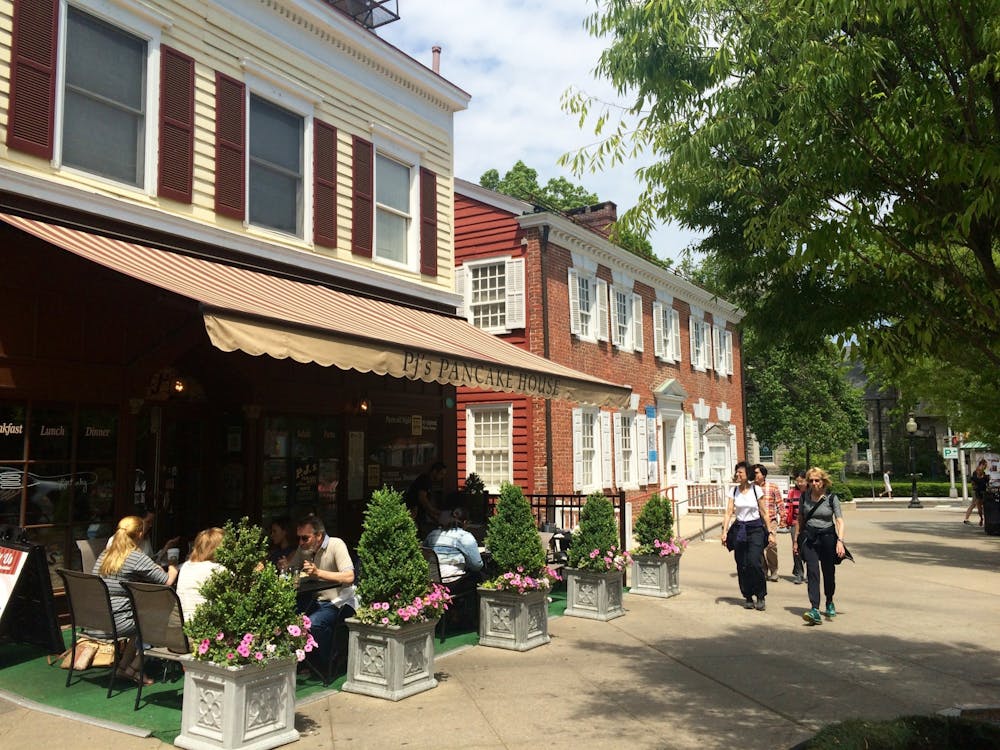A creeping dread permeates Michael Haneke's "The White Ribbon." It's a spectral terror that manifests itself powerfully through acts of violence but does not lay claim to any identifiable source. It's one hell of a disturbing feeling, and it's the kind of mood that the German director has become quite skillful at evoking throughout his career.
Like last year's other infamous European provocateur, Lars von Trier, Haneke is a filmmaker who likes to shock and unsettle his audience, but his methods tend to be rather different from the traditional cinematic grammar of suspense that has been passed down from Alfred Hitchcock to David Fincher. Haneke's films are calm, with long takes and gentle editing patterns, but no less creepy for their stillness. Anyone who's seen Haneke's "Cache" will remember the jump moment that had the audience screaming, but they'll also remember how motionless, extended shots lent the film an eerie, foreboding menace.
Haneke's approach is similarly effective in this tale of unusual happenings in a small German town in 1914. "Ribbon" opens with a doctor falling violently from his horse when it trips on a wire. The wire was clearly set up as a trap, but who is responsible? More accidents follow: A woman dies at a factory, a child is abducted and beaten, and a barn is set aflame.
Just as unsettling as these incidents, however, is the general climate of social repression that Haneke reveals through the stories of various families in the village. In one house, a pastor ties his son up at nights to prevent him from masturbating. In another, a doctor sexually abuses his daughter. A young schoolteacher from a nearby town is the one decent man in the story - his innocent and pure courting of a local nanny is the film's only respite from darkness.
"Ribbon" has had its share of detractors, but few can doubt the cinematic mastery on display. Most stunning is Christian Berger's pristine black-and-white cinematography, which mocks the sordid nature of the storyline. Shot in film and retouched digitally, the film's high-contrast imagery is breathtaking: Fire flickers in a uniform, brilliant shade of white, in pure opposition to the shades of grey around it.
Less apparent, but arguably more impressive, is Haneke's narrative wrangling. Dealing with a cast of dozens of characters, Haneke weaves a tapestry of incident to illustrate the social dynamics of the town in a plot that never seems overstuffed or overwhelming. The performances he gets from the ensemble cast are uniformly impressive, particularly from his youngest actors. The moon-faced young children are incredibly successful at eliciting both sentiment and that aforementioned dread. It's hauntingly sad when the pastor's daughter breaks down after being castigated for a minor offense, but it's terrifying when a four-year-old child's response to learning about the concept of death is a quiet but enraged tantrum.
The corruption of youth is the main theme that Haneke is exploring here, and it is an important subject indeed - this generation would grow to be the backbone of the Nazi Party. The film's detractors have charged Haneke with historical oversimplification. The New York Times critic A.O. Scott scoffed that, according to Haneke, "Nazism was caused by child abuse" - but I don't think that's fair. The obliqueness of the film's endgame and the unreliability of the film's narrator are hardly the tools of simplistic message-making. If anything, the film's ideas about the hypocrisy of authoritarianism, the breeding of individual violence through systematic violence and the collective guilt of societies are overly familiar rather than oversimplified. Those ideas are worth exploring again, in any case. The perils of religiously fanatic cultures are hardly foreign to our times.
"The White Ribbon" isn't the best film to be nominated in the foreign film category for the Academy Awards this year - Jacques Audiard's film "A Prophet" is going to blow minds when released stateside - but it is a film of immense power. Filtering a story of horror through a lens of beauty and the kind of thoroughly classical cinematic style that Bergman or Dreyer might have used, Haneke has created a film of profound, haunting dissonance. It gets under your skin and stays there, just as, in the final shot, the pastor's white collar lingers while the screen fades to black, a symbol of a false purity that tainted souls and ravaged history.

5 Paws
Pros: Masterful technical filmmaking.
Cons: Ideas are a bit familiar.








